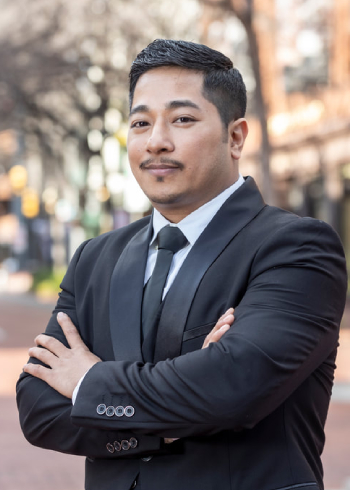A Visa for Artists, Performers and Entertainers to Come to the United States to Perform
Welcome to our August 2023 edition of the Zepeda Law Firm Immigration Newsletter. This month, we’re focusing on the P-3 visas.
The P-3 visa is designated for those looking to come to theU.S. to either perform, teach, or coach under a program that is culturallyunique. Artists, entertainers, and their essential support personnel get toshowcase their talent and share their traditions with the American audience.Let’s delve deeper into what the P-3 visa is all about!
Contact our office so that we may help you or the company you wish to work for withthis process. This is one of the many pathways to finding an opportunity towork in the U.S. Please spread the news to your families and friends in your foreign countries.
P3 Visa Requirements
- Beneficiary’s Qualifications: The beneficiary should be coming to the U.S. either to participate in or teach/coach a culturally unique program.
- Petitioner: A U.S. employer, sponsoring organization, or agent must file a Form I-129, Petition for Nonimmigrant Worker. This is typically done on behalf of the beneficiary.
- Affidavits, Testimonials, or Letters: From recognized experts attesting to the authenticity of the individual’s or group’s skills in performing, presenting, coaching, or teaching the unique and traditional art form. These documents should also give the credentials of the expert, including the basis of his or her knowledge of the beneficiary’s skills.
- Documentation: This can be in the form of news articles, reviews, publications, etc. that demonstrate the performer’s or group’s recognition in the field.
- Evidence: Demonstrating all performances or presentations will be culturally unique events.
- Consultation: A consultation from an appropriate labor organization regarding the nature of the work to be done is usually required. This consultation can be an advisory opinion from a recognized source of expertise in the beneficiary’s area of ability.
- Contract Between Petitioner and Beneficiary: A written contract or summary of the terms of the oral agreement between the petitioner and the beneficiary is required.
- Itinerary: If the beneficiary will be performing or participating in a series of events, an itinerary must be submitted. This should include the dates and locations.
- Duration: The P-3 visa is generally approved for the time needed to complete the event, activity, or performance, up to 1 year. Extensions can be granted in increments of up to 1 year in order to continue or complete the event, activity, or performance.
- Essential Support Personnel: These are individuals who are integral to the performance. They can also apply for a P-3 visa, but they need to prove their essentiality and prior experience with the principal P-3 beneficiary.
Processing Times
- Filing Petition: ThE petition is usually processed in 4-6 months. Premium processing (15 calendar days) is available for an additional fee.
- Wait Time After Approval: After approval of I-129, the applicant can apply for an P-3 visa at a U.S. consulate. This may take additional weeks to months, varying by location.
Please note that processing times can vary based on caseload and other factors.
Frequently Asked Questions (FAQ)
1. What is a P-3 visa?
It’s a type of non-immigrant visa for individuals coming to the U.S. either to perform, teach, or coach in a culturally unique program.
2. Who can apply for a P-3 visa?
Artists, entertainers, or their essential support personnel who are part of a culturally unique program.
3. How long can one stay in the U.S. on a P-3 visa?
The initial period of stay is up to 1 year. Extensions can be granted for increments of up to 1 year to continue or complete the event, performance, or production.
4. Can P-3 visa holders bring their family with them?
Yes, the spouse and unmarried children under 21 of a P-3 artist or entertainer can seek admission under P-4 status.
5. Can P-3 visa holders work elsewhere besides their main event or performance?
No, they are restricted to their specific performance, event, or production.
6. What is the processing time for a P-3 visa application?
Typically, it varies based on the service center and the applicant’s country of origin, but generally, it ranges between 4-6 months.
7. Can a P-3 visa holder apply for a Green Card?
Although the P-3 visa is a non-immigrant visa, holders can pursue a Green Card if they meet specific eligibility criteria.
8. How does one prove the “culturally unique” aspect of their performance?
Through affidavits, testimonials, and other documentation detailing the performer’s or group’s skills and cultural uniqueness.
9. Are there any fees associated with the P-3 visa application?
Yes, there are application fees. It’s best to consult with an immigration attorney or the U.S. Citizenship and Immigration Services website for the most up-to-date information.
Fun Facts !
- Historical Origins: While the P-3 visa itself is modern, the U.S. has a rich history of welcoming international artists and performers. Some of the world’s greatest talents first stepped onto U.S. soil with a purpose similar to today’s P-3 visa holders!
- Variety in Performance: The “culturally unique” criterion doesn’t limit one to just traditional performances. It could be anything from a unique theater performance to a special culinary demonstration.
- Oscar Winners: Some Oscar-winning artists first entered the U.S. with visas similar to the P-3, highlighting the impact of cultural exchange in the world of cinema.
- Cultural Footprint: P-3 visa holders leave behind more than just memories. Many of them end up collaborating with local artists, leading to a fusion of styles and a lasting impact on American art.
- Economic Impact: Cultural programs that involve P-3 visa holders often draw crowds, which helps boost local economies, especially those of smaller towns and cities that host these events.
For any personal queries or assistance with your immigration needs, don’t hesitate to reach out to Zepeda Law Firm. Remember, understanding and navigating immigration law is a journey, and we’re here to guide you every step of the way.
Stay tuned for more insights and updates from the world of immigration law. Until next week!
Sources:
- https://www.uscis.gov/working-in-the-united-states/temporary-workers/p-3-artist-or-entertainer-coming-to-be-part-of-a-culturally-unique-program
- https://www.visapro.com/work-visas/p3-visa/faq2/
- https://total.law/us/work/p3-visa/
Picture source; https://www.youtube.com/watch?app=desktop&v=i4SodbtSd1c


